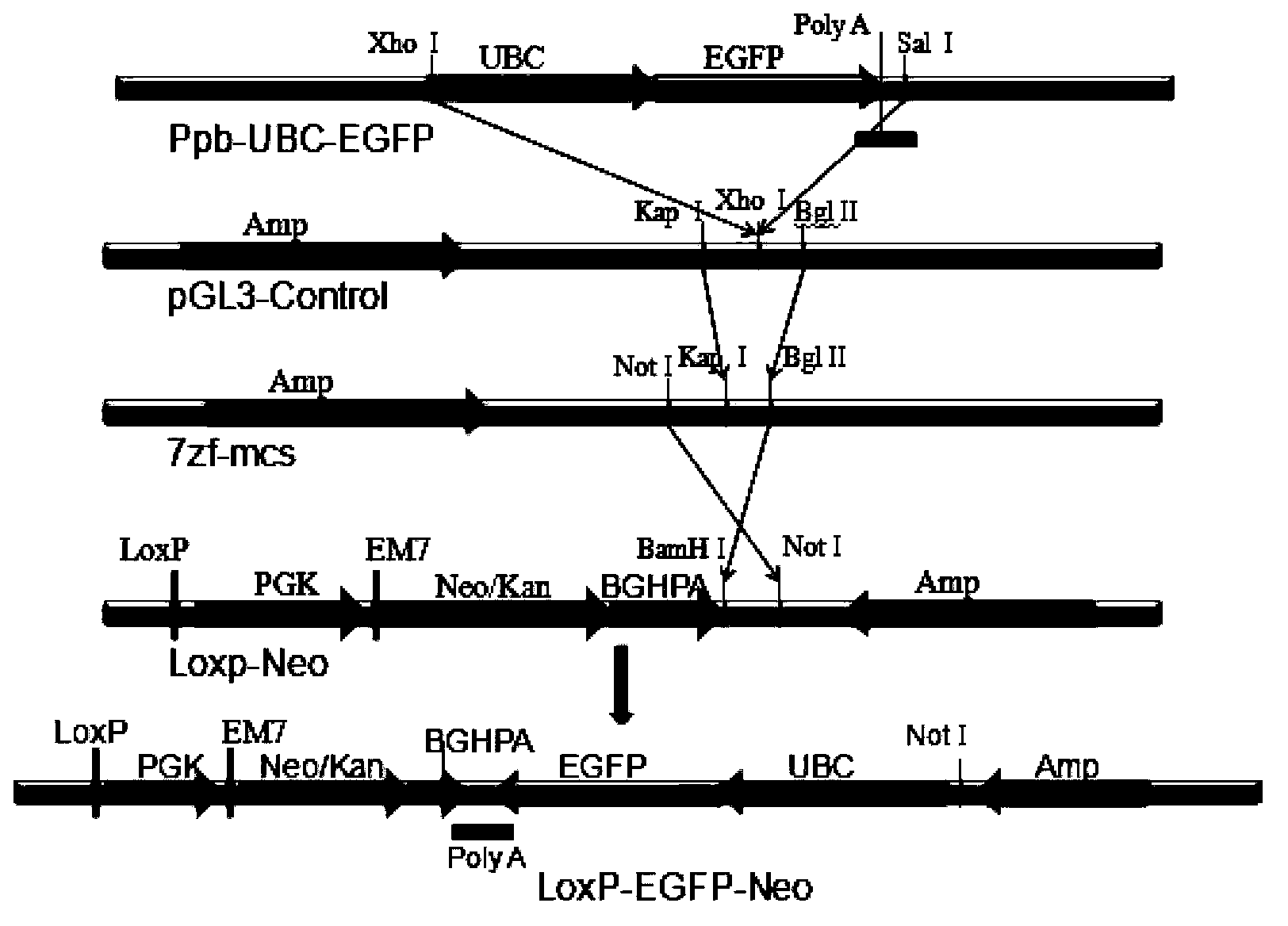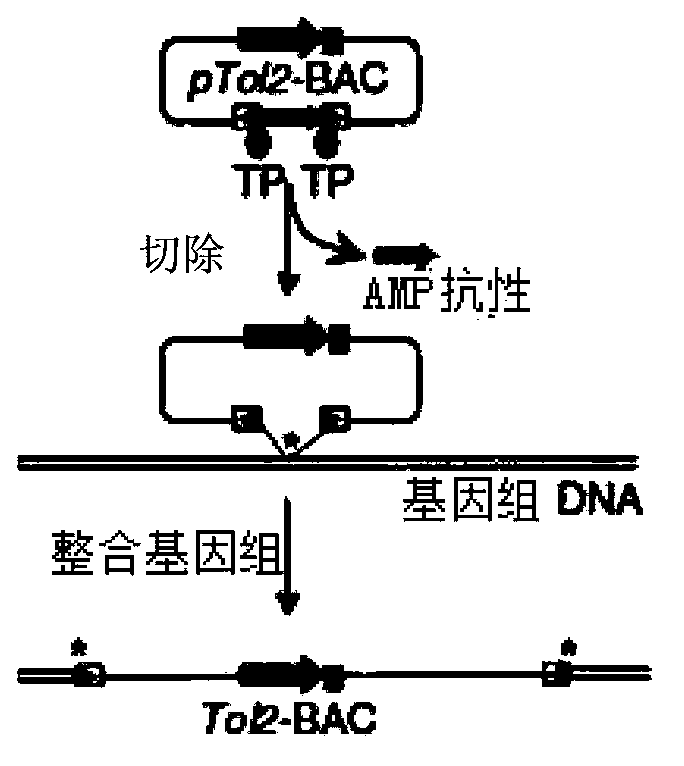Method for improving cell transfection efficiency through utilization of bacterial artificial chromosome homologous recombination
An artificial chromosome and homologous recombination technology, which is applied in the direction of recombinant DNA technology and the use of vectors to introduce foreign genetic material, etc., can solve the problems of troublesome operation, large BAC, and difficult molecular operation, and achieve the effect of improving efficiency and good effect
- Summary
- Abstract
- Description
- Claims
- Application Information
AI Technical Summary
Problems solved by technology
Method used
Image
Examples
Embodiment 1L
[0024] Example 1 Construction of LoxP-eGFP-neo vector
[0025]1. Double digestion with xho and sal to excise a regulatory element with a Loxp site and eGFP (enhanced Green Fluorescent Protein) eukaryotic expression from the pPB-eGFP-neo plasmid (Wellcome Trust Sanger) The complete sequence was ligated into a PGL3-contro (purchased from PROMEGA, E1741) vector digested with xho to construct a PGL3-loxp-eGFP vector.
[0026] 2. The PGL3-loxp-eGFP plasmid was double-digested with Bgl and Kpn, and the Loxp-eGFP fragment with Bgl and Kpn cohesive ends was cut out and ligated to 7zf-mcs (in PROMEGA's 7zf-mcs) double-digested by Bgl and Kpn. On the basis of the pGEM-7zf vector, the cloning site was changed to obtain the 7zf-mcs vector), and the 7zf-loxp-eGFP vector was constructed.
[0027] 3. The 7zf-loxp-EGFP vector was double-digested with Bgl and not, and the Loxp-eGFP fragment with Bgl and not sticky ends was cut out, and ligated to the plasmid Loxp-F3-neo-F3 double-digested by ...
Embodiment 2
[0029] Example 2 Construction of pCC1BAC-Tol2 vector
[0030] 1. Three correctly identified BAC clones (numbered 706H15, 169D05, 572K17) were prepared to be electroshock competent.
[0031] 2. The pABRG recombinant plasmid was electroporated into three BACs (numbered 706H15, 169D05 and 572K17) which were electro-competent and identified.
[0032] 3. The above-identified positive clones were prepared into BAC electroshock competent.
[0033] 4. Design homology arm primers, PCR-amplify the Tol2 transposition element (SEQ ID No. 5), and recover the PCR-amplified fragments.
[0034] 5. Electroshock the recovered PCR fragments into the BAC electroshock competent.
[0035] 6. Pick a single clone for PCR and sequencing identification, and save the strain after the identification is correct.
[0036] 7. The correctly identified pCC1BAC-Tol2 positive clone was prepared to be electroshock competent for recombination.
[0037] There are 3 different BAC clone numbers in total, and the...
Embodiment 3
[0039] Example 3 Construction of plasmid pCC1BAC-Tol2-eGFP
[0040] 1. The above-identified pCC1BAC-Tol2 positive clone was prepared to be electroshock competent containing the recombinant plasmid pABRG.
[0041] 2. Design homology arm primers, amplify the sequence fragments carrying LoxP-eGFP-neo in the LoxP-eGFP-neo vector by PCR, and recover the PCR-amplified fragments.
[0042] 3. The recovered PCR fragment was electroporated into the electroshock competent pCC1BAC-Tol2 containing the recombinant plasmid pABRG prepared above.
[0043] 4. Pick positive clones for cross-fragment PCR and sequencing identification, and save the strains after identification is correct.
[0044] 5. Carry out endotoxin-free extraction of firm and correct positive clones, and prepare for electrotransfection.
[0045] Likewise, the vectors were marked as 706H15-Tol2-eGFP, 169D05-Tol2-eGFP and 572K17-Tol2-eGFP vectors, and their sequences were shown in SEQ ID No. 3, SEQ ID No. 8 and 9, respectivel...
PUM
 Login to View More
Login to View More Abstract
Description
Claims
Application Information
 Login to View More
Login to View More - R&D
- Intellectual Property
- Life Sciences
- Materials
- Tech Scout
- Unparalleled Data Quality
- Higher Quality Content
- 60% Fewer Hallucinations
Browse by: Latest US Patents, China's latest patents, Technical Efficacy Thesaurus, Application Domain, Technology Topic, Popular Technical Reports.
© 2025 PatSnap. All rights reserved.Legal|Privacy policy|Modern Slavery Act Transparency Statement|Sitemap|About US| Contact US: help@patsnap.com



